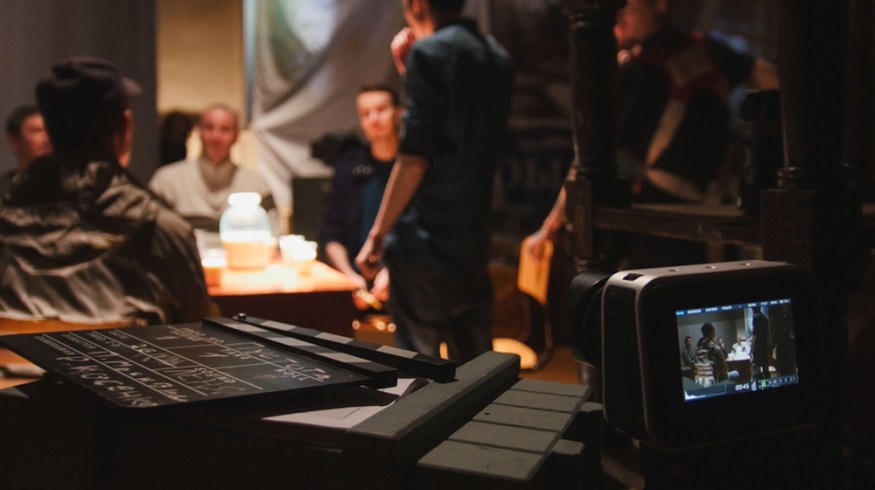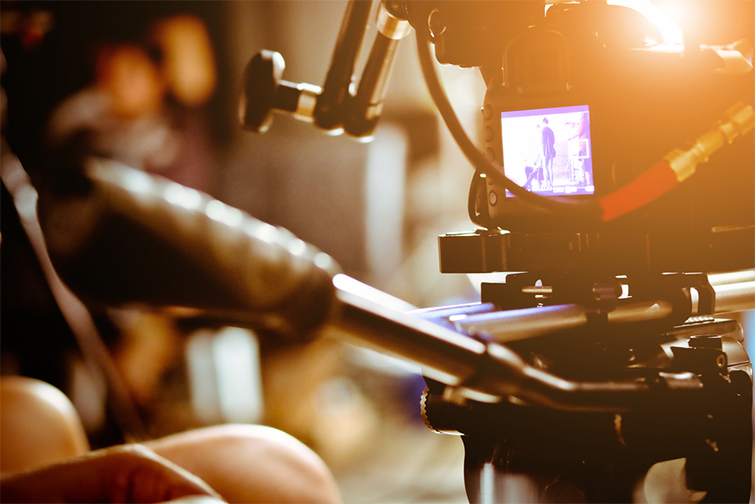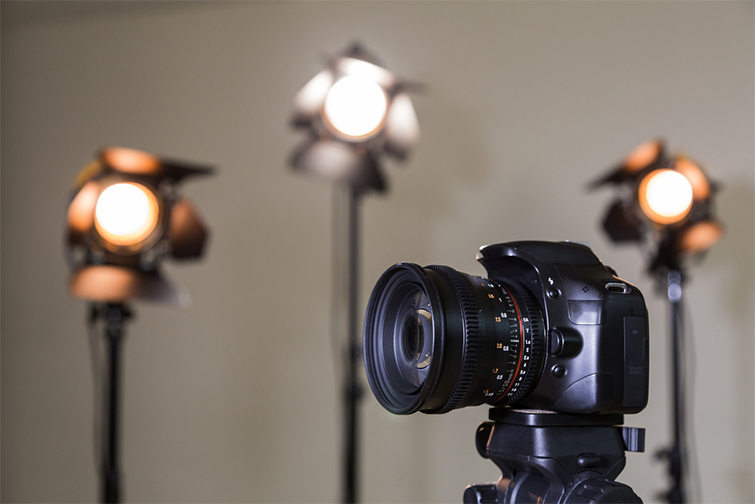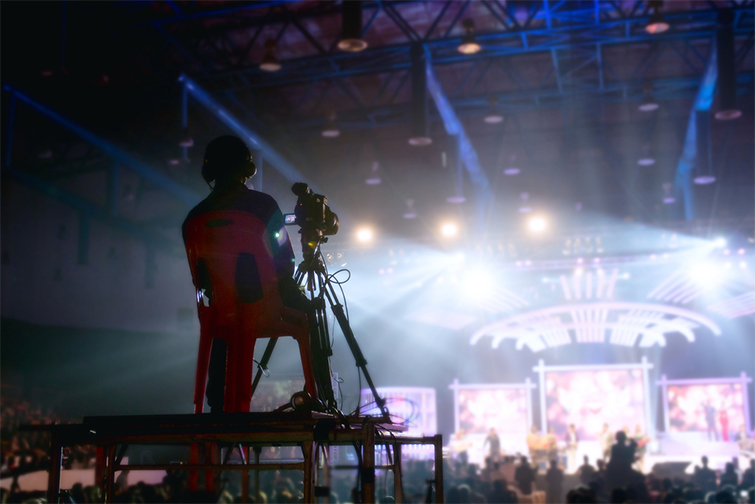
6 Production Tips for Shooting an Electronic Press Kit
The electronic press kit (EPK) is an important element of a film or video production. Here’s everything you need to know about shooting one.
Cover image by Studio 72.
If you’re unfamiliar with an electronic press kit (EPK), let’s take a minute to catch you up. In the world of feature films (and sometimes even shorts), EPKs are an important part of a film’s promotion cycle. Usually, the production company (or the distributor, if there is one) commissions an EPK during production, and it functions as a catch-all promotion device once the film begins its theatrical (or streaming) run.
Usually, you film an EPK while a film is still in production, and it usually includes a full package of interviews with the director, producers, and principal cast members — along with behind-the-scenes footage and B-roll. In the old days, these assets went to relevant news and press outlets for coverage, either by physically mailing CDs or, later, uploading to sites like Dropbox or other file-sharing services
EPKs don’t make or break a project, but for serious productions, an EPK that does its job well is a huge boon for exposure, which can help a film’s overall bottom line. So, whether you need to shoot one for a feature or produce one for your own project, let’s look at these tips for creating a quality EPK.
1. Shoot It Neutral

Image by ponsulak.
While you may have the urge to knock out some stylized, cool-looking footage for interviews and B-roll, it can actually be counterproductive. The goal of the footage is usability — you want other outlets and fellow editors to have as much leeway with the material as they can. Sometimes the interview footage gets spliced together with clips of reporters asking questions to set up your EPK-ready answers — in which case, they need to use your footage to match the style.
So, shoot as flat and neutral as you can to accommodate as many changes to the edit as possible. If you do want to go for style, add a second file, but make the RAW clips available as well.
2. Keep It Comfortable

Image via Kzenon.
Big-budget feature sets can be full of excitement, but you can always tell that the stakes are high. Everyone from the director to the actors to the PAs has a purpose, and they have to stay completely focused all the time. That being said, when you’re shooting EPKs on set, you may have to call these key players away from their tasks to focus on interviews, which may seem mundane and distracting.
So, to stay in the good graces of the cast and crew, keep your interviews comfortable, fun, and as relaxing as possible. The EPK is your particular task, so you want to do it well, but the EPK isn’t going to make or break a movie — the direction, acting, and production is what really matters. So set your shots before your subjects arrive; offer them water or tea; and keep it quick, lighthearted, and fun. And if a fire breaks out on set, be ready to let them run to it with only a moment’s notice.
3. Make Your Actors Look Good

Image by lapandr.
After you focus on making your EPK interview subjects comfortable, your next biggest job is to make them look good — especially the actors. Having the hair and makeup team on hand is a good option — or at least make them aware when you’re recording the talent. Actors care about these things as much you care about charging your batteries and setting your focus — it’s part of their professional duties. If you can offer a monitor for them to review, they may love you more for it. Check for minute things like shirt wrinkles, makeup glare, or forehead sweat, and present them in the best light possible.
4. Wide Array of Subjects

Image via phichet chaiyabin.
Depending on your EPK project, interview questions may be pre-arranged, or you may need to come up with them yourself. If you do get to come up with your own, the goal is to cover a wide array of subjects that can help the relevant news outlets, journalists, and whoever else that may come into contact with your EPK. Boilerplate stuff works fine in most instances for what the film is about, what it’s like working with the director, etc., but try to throw out a few creative, open-ended softballs so your subjects (actors especially) can add a little bit about themselves into their answers.
5. Don’t Let It Get Stale

Image via gnepphoto.
By the same token, when you’re interviewing sometimes 10-15 people for an EPK, asking the same questions over and over will just yield the same answers. If you’re operating off of a set script, stick to it, but it doesn’t hurt to keep things fresh. If five people have given the same answer already, let your next subject know that. Say, “X, Y, and Z already said this, but what do you think?” Encourage some diversity in your soundbites.
6. B-Roll Helps

Image by gnepphoto.
While it doesn’t always get included in an EPK, on-set B-roll can be a huge help to the outlets covering your project. Yes, they can always work with clips, images, and segments from your film’s trailer, but a few moments of your director and cast working together on set is much more interesting in the eyes of their audiences.
However, getting B-roll on a finely tuned-yet-sometimes-chaotic set can be tricky. You’ll have to pick your spots, stay out of the way, and pay attention to how long you can stay there before becoming an annoyance. Luckily though, you don’t need much. As long as you show the major players in action, you’ll be ahead of the game.
For more production and marketing tips, check out some of these articles.






